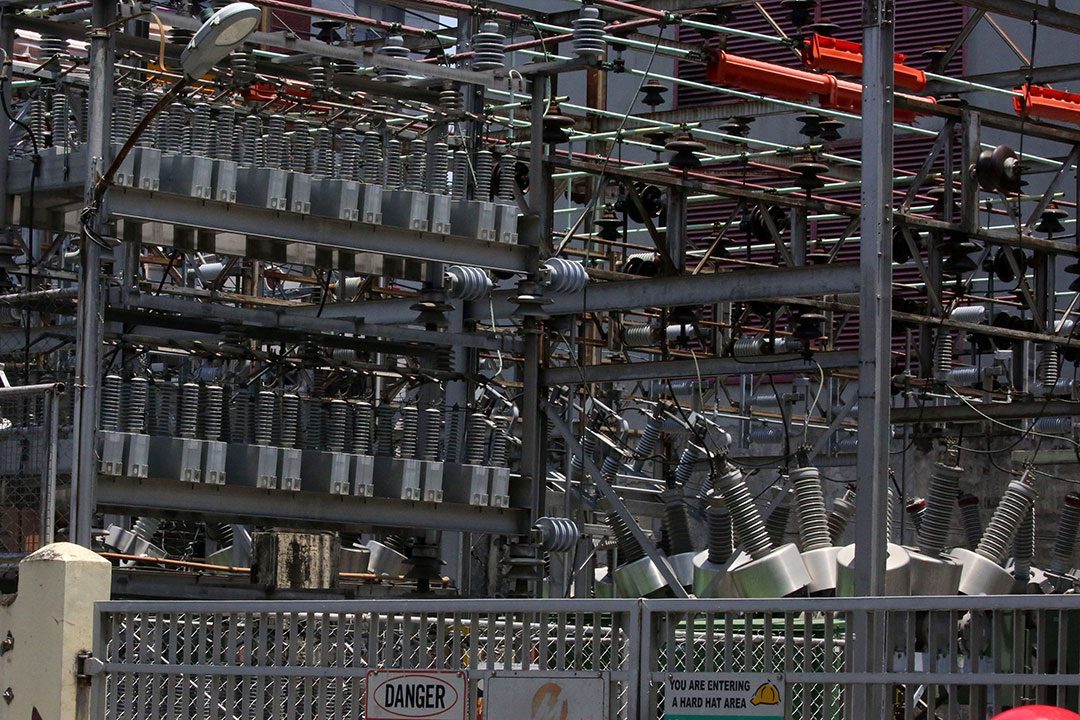Energy dep’t warns Luzon grid may experience red alerts until next week

By Sheldeen Joy Talavera, Reporter
THE LUZON GRID could face red alerts until next week if the power plants that experienced forced outage or derated capacities fail to resume operations, the Department of Energy (DoE) said on Monday.
“If the situation does not improve, if the plants that went offline because of the typhoon do not come back by next week, probably we’ll have a red alert also next week,” Energy Undersecretary Rowena Cristina L. Guevara said at a media briefing on Monday.
However, she said the DoE expects a total of 4,000 megawatts (MW) to come online this year, including 2,000 MW from conventional plants and 2,000 MW from renewables.
“This week, we expect to have some improvements but still we are dependent on having all of them back working under more normal conditions as the weather improves,” Energy Secretary Raphael P.M. Lotilla said.
In an advisory, the National Grid Corp. of the Philippines (NGCP) said the Luzon grid was placed under red alert status from 1-5 p.m. and 6-10 p.m.
A yellow alert was also raised in the Luzon grid from 12-1 p.m., 5-6 p.m., and 10 p.m. to 12 a.m.
The grid had 11,810 MW in available capacity, while the peak demand hit 11,785 MW.
“[Typhoon Aghon] has caused a substantial decrease in available power supply in the grid at a time when the hydropower plants have not yet recovered from their low water supply,” Mr. Lotilla said.
Thirty-four power plants were either on forced outage or at derated capacities as of Monday morning, which resulted in 4,497.3 MW being unavailable to the grid.
Aghon (international name: Ewiniar), the first storm of the year, intensified into a typhoon over the coastal waters of Burdeos, Quezon on Sunday evening.
In an 11 a.m. bulletin, the Philippine Atmospheric, Geophysical and Astronomical Services Administration said Typhoon Aghon maintained its strength while moving northeastward over the Philippine sea.
One of the power plants on shutdown was the 1,200-MW Ilijan power plant after its floating storage unit had to be disconnected and relocated for safety reasons since Aghon entered the Philippine area of responsibility.
Pagbilao Units 1 and 2 with a total capacity of 764 MW and Unit 3 with a capacity of 420 MW were also shut down, the DoE said.
Operations were also halted at the following plants: Masinloc coal-fired thermal power plant 3 with a capacity of 335 MW, San Buenaventura Power Limited coal power plant with 455 MW, and Botocan hydroelectric power plant with 20.8 MW.
“Several hydropower plants are derated as you know and despite the typhoon, they have not yet recovered their normal levels,” Mr. Lotilla said.
He urged consumers to conserve energy “to minimize the dispatch of the more expensive oil-based power plants.”
“The oil-based power plants, however, have been useful in so far as providing power to the grid particularly in the absence of the hydropower plants,” he said.
He also encouraged commercial and industrial consumers to continue to participate in the Interruptible Load Program (ILP) of distribution utilities.
Under the program, large power consumers are asked to use their generation sets or shift their operations instead of getting power from the grid.
This is to spare households from power interruptions during instances of red alert or when supply is insufficient to meet the demand.
The Energy Regulatory Commission (ERC) said it had suspended the Wholesale Electricity Spot Market (WESM) for the Luzon region due to the red alert.
“The operations of the WESM shall remain suspended until issuance of a notice of market resumption by the ERC,” the regulator said in a statement.
WESM is the trading floor for electricity where energy companies buy power when their long-term contracted power supply is insufficient to meet customer needs.
Earlier this month, the ERC suspended WESM trading during red alerts to prevent a spike in electricity prices.
As of the 2 p.m. update, the NGCP said transmission lines and facilities were under normal operations.



